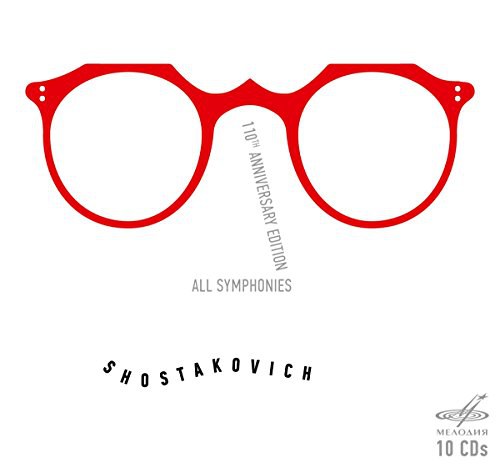肖斯塔科维奇:交响全集
豆瓣
简介
Dmitri Shostakovich’s creations constitute a musical chronicle of the epoch. What we hear in his music is something that continues to alarm minds and souls of millions of people. His fifteen symphonies captured not only the great musician’s evolution – as if the entire 20th century with its great discoveries and perturbations, unprecedented progress and terrifying catastrophes breathes in their scores. These are unique documents of human spirit that will stay with us for good to tell us about their time, to stir heated theoretical and aesthetic disputes, to give us a reason for very different interpretations, and to command our admiration or sharp rejection. Whatever the case may be, they will never find an indifferent listener.
Firma Melodiya is preparing a number of large-scale projects for the Shostakovich anniversary year. We present the first of them – a set of the composer’s symphonies performed by the greatest masters of the Soviet conducting school and brightest interpreters of Shostakovich’s music – Evgeny Mravinsky, Kirill Kondrashin, Evgeny Svetlanov and Gennady Rozhdestvensky. The set also includes recordings made by Konstantin Ivanov, a predecessor of Evgeny Svetlanov as chief conductor of the country’s principal orchestra – the USSR State Academic Symphony Orchestra; Yuri Temirkanov, a successor of Evgeny Mravinsky, a great representative of the St. Petersburg conducting school; Rudolf Barshai, a founder of the first Soviet chamber orchestra and the one who inspired Shostakovich’s Fourteenth Symphony; and Maxim Shostakovich, the composer’s son who presented the world premiere of the last, Fifteenth Symphony.
The live and studio recordings of Shostakovich’s symphonies were made by Firma Melodiya from 1961 to 1984. The studio recording is peculiar for the fact it was realized shortly after the world premiere in the presence and under supervision of the composer. An unconfirmed legend among the former members of the Moscow Radio Symphony Orchestra has it that the recording was to be erased together with the other ones after Maxim Shostakovich defected from the Soviet Union. However, it survived among the Melodiya phonograms.
The edition comprises a lidded hard box made from lined cardboard, 9 digipacks and a thick hardcover booklet in English and Russian.
tracks
1. Allegretto - Allegro non troppo
2. Allegro
3. Lento
4. Allegro molto - Lento - Allegro molto
Sinfonie Nr. 2 H-Dur op. 14 "An den Oktober"
Sinfonie Nr. 3 Es-Dur op. 20 "Der 1. Mai"
1. Allegretto poco moderato
2. Moderato con moto
3. Largo - Allegro
1. Moderato
2. Allegretto
3. Largo
4. Allegro non troppo
1. Largo
2. Allegro
3. Presto
1. Allegretto
2. Moderato (poco Allegretto)
3. Adagio
4. Allegro non troppo
1. Adagio - Allegro non troppo
2. Allegretto
3. Allegro non troppo
4. Largo
5. Allegretto
1. Allegro
2. Moderato
3. Presto
4. Largo
5. Allegretto
1. Moderato
2. Allegro
3. Allegretto
4. Andante - Allegro
1. The Palace Square: Adagio
2. The 9th of January: Allegro
3. In memoriam: Adagio
4. The tocsin: Allegro non troppo
1. Revolutionary Petrograd: Moderato - Allegro
2. Razliv: Allegro - Adagio
3. Aurora: Allegro
4. The dawn of humanity: Allegro - Allegretto
1. Babi Yar: Adagio
2. Humour: Allegretto
3. At the store: Adagio
4. Fears: Largo
5. Career: Allegretto
1. De profundis: Adagio
2. Malagueña: Allegretto
3. La Loreley: Allegro molto - Adagio
4. Le suicidé: Adagio
5. Les attentives 1 (On watch): Allegretto
6. Les attentives 2 (Madam, look!): Adagio
7. A la Santé: Adagio
8. Réponse des cosaques zaporogues au sultan de Constantinople: Allegro
9. Oh, Delvig, Delvig!: Andante
10. Der Tod des Dichters: Largo
11. Schlußstück: Moderato
1. Allegretto
2. Adagio
3. Allegretto
4. Adagio - Allegretto